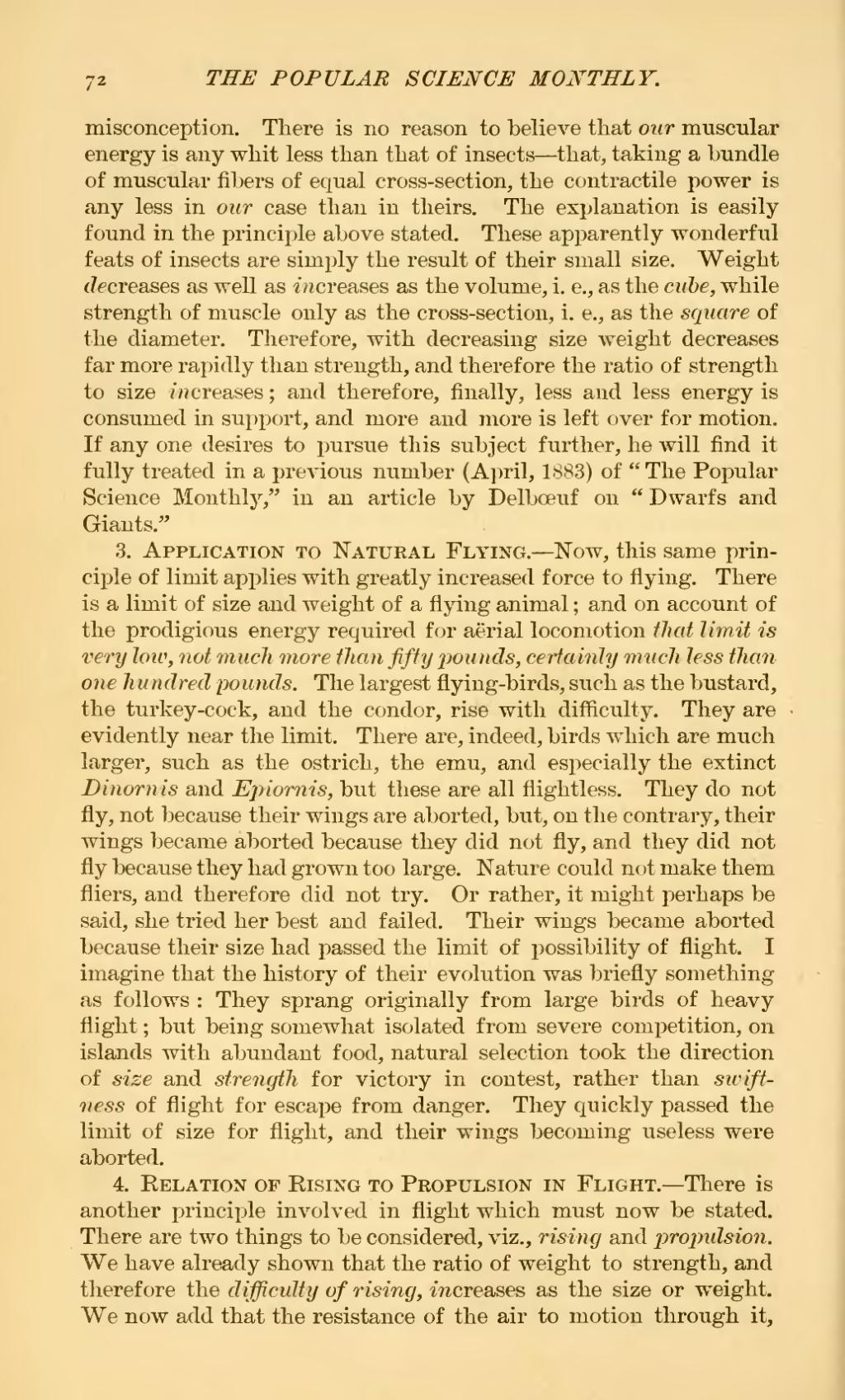misconception. There is no reason to believe that our muscular energy is any whit less than that of insects—that, taking a bundle of muscular fibers of equal cross-section, the contractile power is any less in our case than in theirs. The explanation is easily found in the principle above stated. These apparently wonderful feats of insects are simply the result of their small size. Weight decreases as well as increases as the volume, i. e., as the cube, while strength of muscle only as the cross-section, i. e., as the square of the diameter. Therefore, with decreasing size weight decreases far more rapidly than strength, and therefore the ratio of strength to size increases; and therefore, finally, less and less energy is consumed in support, and more and more is left over for motion. If any one desires to pursue this subject further, he will find it fully treated in a previous number (April, 1883) of "The Popular Science Monthly," in an article by Delbœuf on "Dwarfs and Giants."
3. Application to Natural Flying.—Now, this same principle of limit applies with greatly increased force to flying. There is a limit of size and weight of a flying animal; and on account of the prodigious energy required for aërial locomotion that limit is very low, not much more than fifty pounds, certainly much less than one hundred pounds. The largest flying-birds, such as the bustard, the turkey-cock, and the condor, rise with difficulty. They are evidently near the limit. There are, indeed, birds which are much larger, such as the ostrich, the emu, and especially the extinct Dinornis and Epiornis, but these are all flightless. They do not fly, not because their wings are aborted, but, on the contrary, their wings became aborted because they did not fly, and they did not fly because they had grown too large. Nature could not make them fliers, and therefore did not try. Or rather, it might perhaps be said, she tried her best and failed. Their wings became aborted because their size had passed the limit of possibility of flight. I imagine that the history of their evolution was briefly something as follows: They sprang originally from large birds of heavy flight; but being somewhat isolated from severe competition, on islands with abundant food, natural selection took the direction of size and strength for victory in contest, rather than swiftness of flight for escape from danger. They quickly passed the limit of size for flight, and their wings becoming useless were aborted.
4. Relation of Rising to Propulsion in Flight.—There is another principle involved in flight which must now be stated. There are two things to be considered, viz., rising and propulsion. We have already shown that the ratio of weight to strength, and therefore the difficulty of rising, increases as the size or weight. We now add that the resistance of the air to motion through it,
